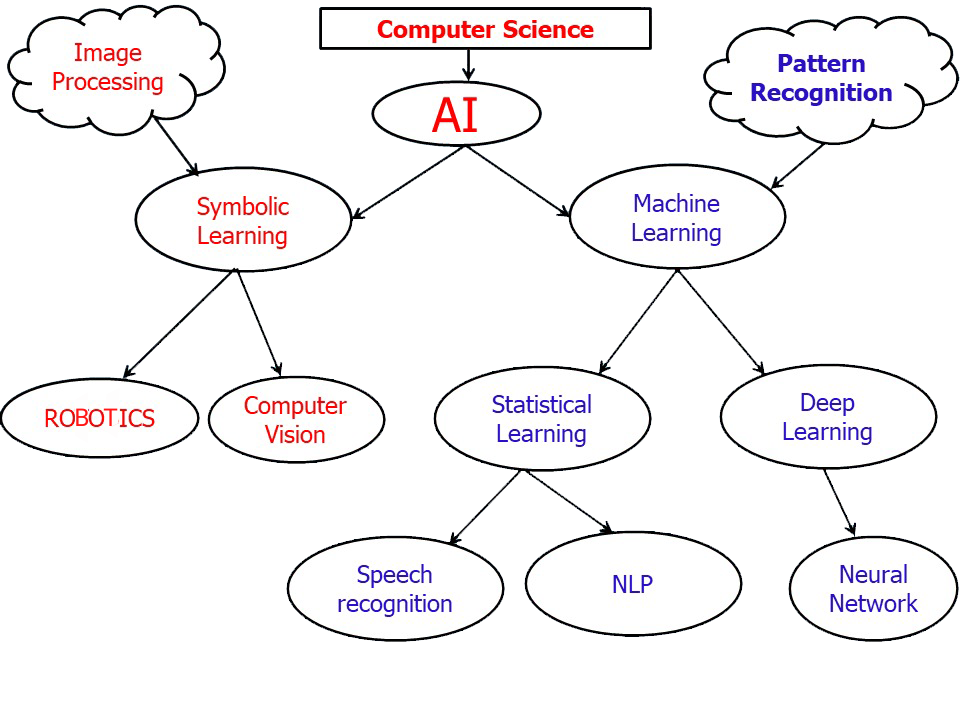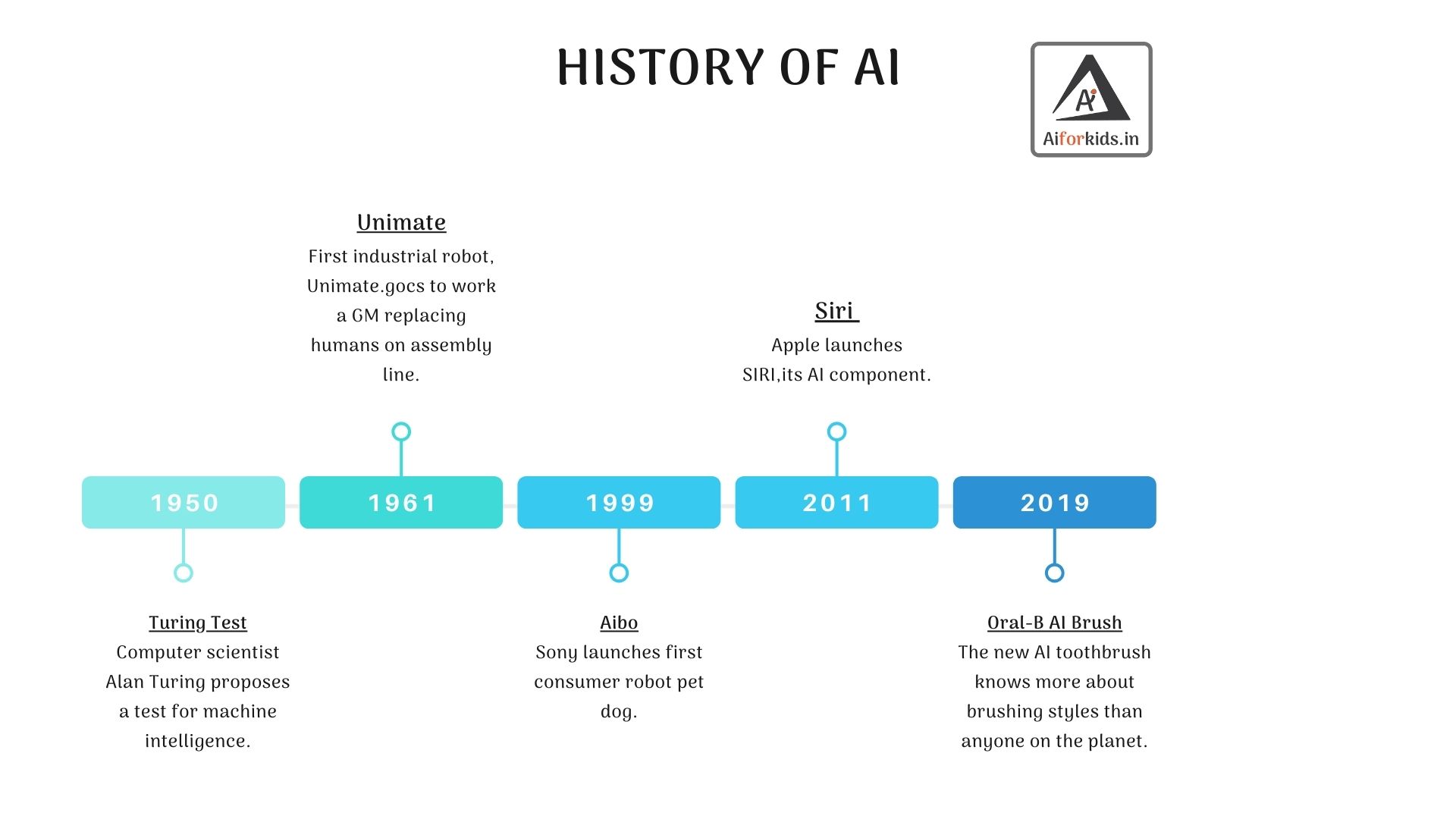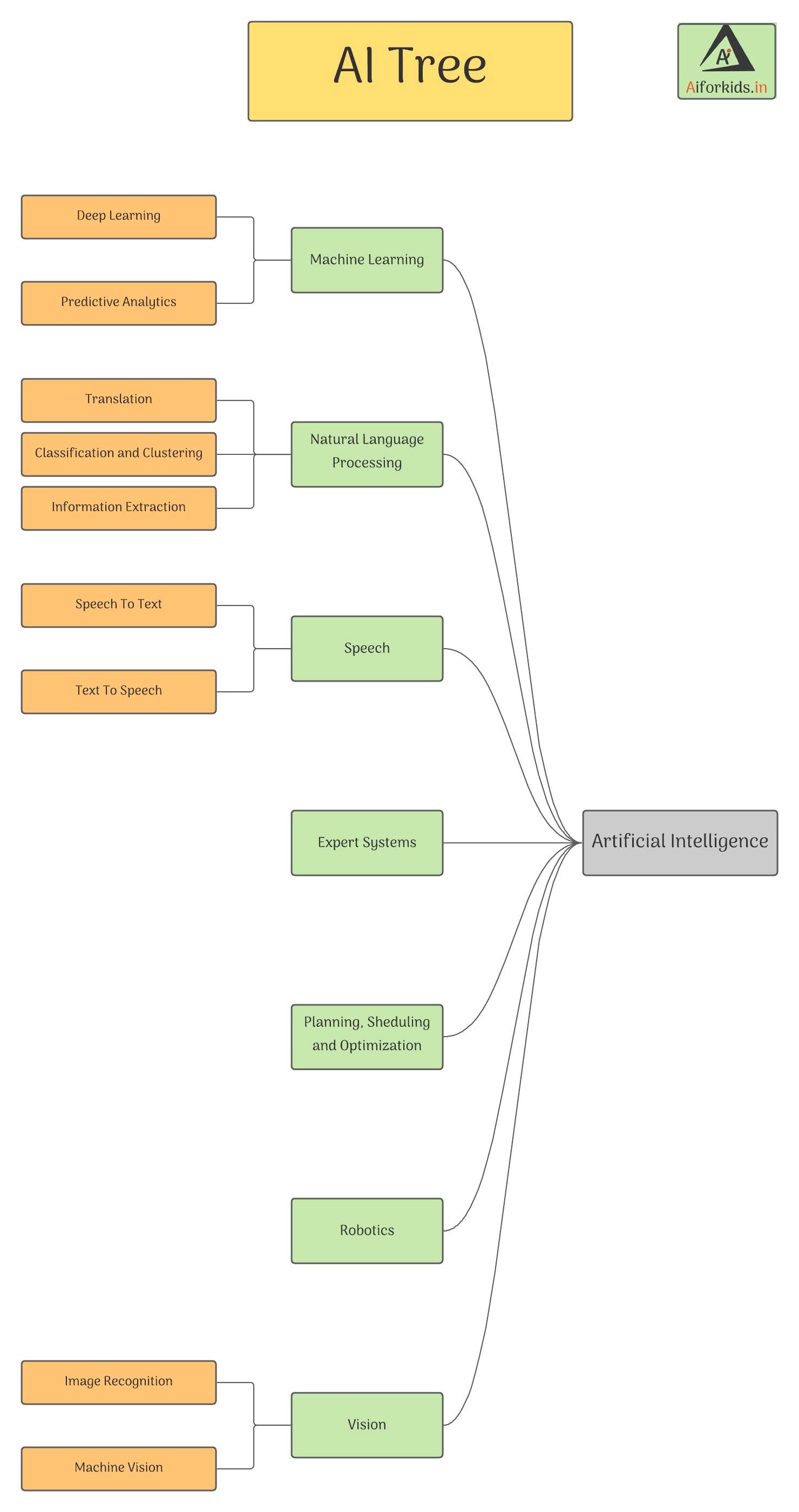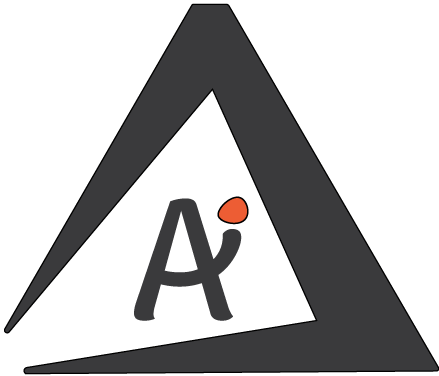What is AI Glossary Class 9
| AI | History of Ai | Symbolic Ai |
| Narrow Intelligence | Applications-of-AI | Drawbacks of Ai |
| General Intelligence | Ai Tree | Machine Learning |
| Super Intelligence | Concerns of Ai | Strong Ai |
What is Artificial Intelligence ?

Artificial Intelligence has always been a term that intrigues people all over the world
Artificial Intelligence (AI) refers to the ability of machines to perform cognitive tasks like thinking, perceiving, learning, problem-solving, and decision making.
Artificial Intelligence is the intelligence of machines and it is the branch of Computer Science that is concerned with the automation of intelligent behaviors.
Definitions by Organizations
It is inspired by the ways people use their brains to perceive, learn, reason out and decide the action. Various organizations have coined their own versions of defining Artificial Intelligence. Some of them are mentioned below:
Computers with the ability to mimic or duplicate human Intelligence including cognitive skills is Artificial Intelligence
–Aiforkids
NITI Aayog: National Strategy for Artificial Intelligence
AI refers to the ability of machines to perform cognitive tasks like thinking, perceiving, learning, problem solving and decision making. Initially conceived as a technology that could mimic human intelligence, AI has evolved in ways that far exceed its original conception.
With incredible advances made in data collection, processing and computation power, intelligent systems can now be deployed to take over a variety of tasks, enable connectivity and enhance productivity.
World Economic Forum
Artificial intelligence (AI) is the software engine that drives the Fourth Industrial Revolution. Its impact can already be seen in homes, businesses and political processes. In its embodied form of robots, it will soon be driving cars, stocking warehouses and caring for the young and elderly.
It holds the promise of solving some of the most pressing issues facing society, but also presents challenges such as inscrutable “black box” algorithms, unethical use of data and potential job displacement.
As rapid advances in machine learning (ML) increase the scope and scale of AI’s deployment across all aspects of daily life, and as the technology itself can learn and change on its own, multi-stakeholder collaboration is required to optimize accountability, transparency, privacy and impartiality to create trust
European Artificial Intelligence (AI) leadership, the path for an integrated vision
AI is not a well defined technology and no universally agreed definition exists. It is rather a cover term for techniques associated with data analysis and pattern recognition.
AI is not a new technology, having existed since the 1950s. While some markets, sectors and individual businesses are more advanced than others.
AI is still at a relatively early stage of development, so that the range of potential applications, and the quality of most existing applications, have ample margins left for further development and improvement.
Encyclopedia Britannica
Artificial intelligence (AI), is the ability of a digital computer or computer-controlled robot to perform tasks commonly associated with intelligent beings. The term is frequently applied to the project of developing systems endowed with the intellectual processes characteristic of humans, such as the ability to reason, discover meaning, generalize or learn, from past experience.
Types of Artificial Intelligence
Artificial Intelligence can be broadly classified into :
Artificial Narrow Intelligence (ANI)
Artificial narrow intelligence (ANI or narrow AI) refers to a computer’s ability to perform a single task extremely well, such as crawling a webpage or playing chess.
Artificial general intelligence (AGI) is when a computer program can perform any intellectual task that a human could.
ANI is AI that is programmed to perform a single task extremely well.
The narrow AI techniques basically fall into two categories:
Symbolic AI
Symbolic artificial intelligence, also known as good old-fashioned AI (GOFAI), was the dominant area of research for most of AI’s history.
Symbolic AI requires programmers to meticulously define the rules that specify the behavior of an intelligent system. Symbolic AI is suitable for applications where the environment is predictable and the rules are clear-cut.
Machine Learning
Machine learning, the other branch of narrow artificial intelligence, develops intelligent systems through examples called datasets.
A developer of a machine learning system creates a model and then “trains” it by providing it with many examples.
The machine learning algorithm processes the examples and creates a mathematical representation of the data that can perform, prediction and classify tasks.
Artificial General Intelligence (AGI)
AGI system can perform any task that a human can. However, AGI systems can perform the task with greater efficacy than humans only for a particular/single function assigned to them, while they have zero capability to do any task which is not assigned to them.
To simply put, AGI is a kind of artificial intelligence we see in the movies, like the robots from West world or star trek: The Next Generation. AGI is a machine with general intelligence much like a human being
Artificial general intelligence is also called strong AI or deep AI.
This is a concept of the machine with general intelligence that mimics human intelligence, with the ability to think, understand, learn and apply its intelligence to solve any problem as humans do in any given situation.
Requirements of artificial general intelligence :
- Common Sense
- Background Knowledge
- Transfer Learning
- Abstraction
- Causality
Artificial Super Intelligence (ASI)
Artificial Super Intelligence (ASI) is the hypothetical AI, i.e. we have not been able to achieve it but we know what will happen if we achieve it.
So basically it is the imaginary AI that not only interprets or understands human behavior and intelligence, but ASI is where machines will become self-aware/self-vigilant enough to surpass the capacity of human intelligence and behavioral ability.
You can say this is the AI that we fear since it has the power to think on its own with self-awareness and consciousness. But it is a hypothetical concept and we are not even 1% near it, but it can be achieved.
ASI would be exceedingly far-far better at everything or whatever we do, whether it be in maths, science, arts, sports, medicine, marketing strategies, hobbies, emotional relationship, or applying a precise human intellect to a particular problem.
If AI itself begins designing better AI than human programmers, the result could be machines whose intelligence exceeds ours by more than ours exceeds that of snails.
– Stephen Hawking
History of AI

To know in detail visit: History of AI
Applications of Ai

To know more about applications of AI visit: Applications of Ai
AI Tree
AI tree refers to all aspects and divisions of AI.
Just understand that it is like the Family tree of AI.

Benefits of AI
AI is very beneficial to humans as they can do:-
- AI can work more efficiency as it have low error rates in contrast with humans.
- They can perform dangerous tasks such as conducting researches about volcanos, roaming in space, collecting information about viruses and so on.
- They can work for long time as they don’t get tired.
- It can predict recommendations i.e, youtube’s feed, google ads
- Can detect frauds
- They can search more logically as they doesn’t have emotions.
- They can search more logically as they doesn’t have emotions.
- It can do Robotics radiosurgery, our other types of radio surgeries can achieve precision that humans can do And so on………
Concerns of AI
“The development of full Artificial intelligence could spell the end of human race”
-Stephen Hawkings
“I am in the camp that is concerned about Artificial Intelligence”
–Bill Gates
“I think we should be very careful about Artificial intelligence”
–Elon Musk
“..eventually they’ll think faster then us and they’ll get rid of slow humans..”
-Steve Wozniak
Drawbacks Of AI
- If they are not coded properly they can lead to destructions.
- Requires lot of money and time for their build, rebuild and repair.
- Can cause unemployment as they will replace jobs of humans. Example: Taxi drivers will lost their jobs due to self-driving cars.
- No Original creativity as they doesn’t have emotions and they work according to humans’ programmes.
- Misuse of technology can be happen if they are in wrong hands that can lead to wars.
And so on……
Questions/Answer
Open questions answer related to these pages
Ask Questions and Get Answers from here

